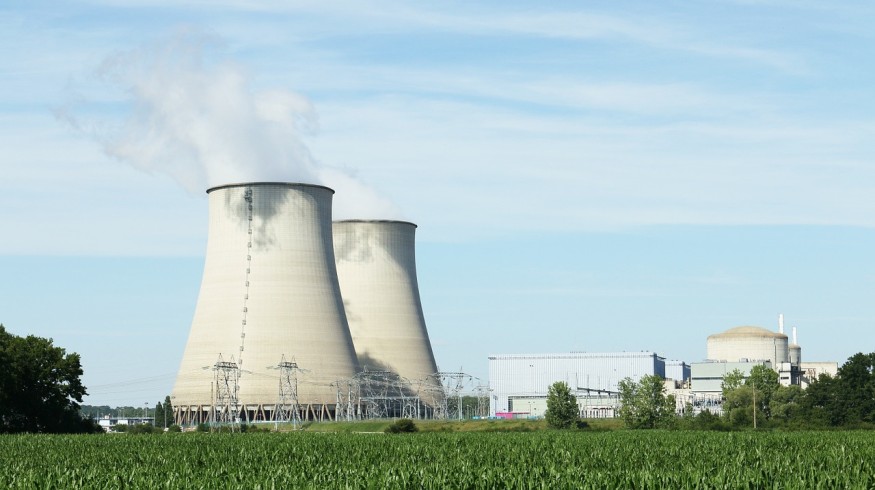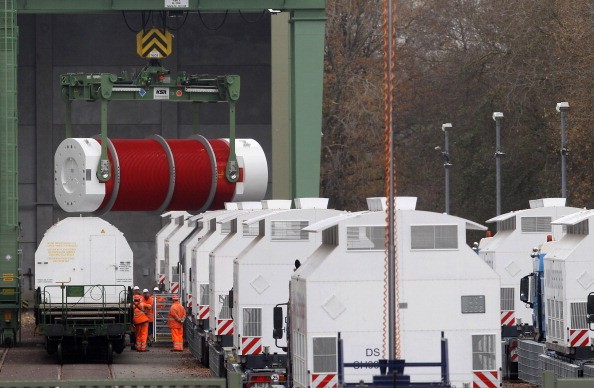While Boris Johnson made a new push for nuclear power, the £131 billion challenge of properly disposing of enormous quantities of radioactive waste generated by the previous British atomic energy program remained unanswered.

Nuclear Legacy
The costly and deadly legacy of the UK's nuclear revolution in the twentieth century is 700,000 cubic meters of toxic waste - nearly the volume of 6,000 double-decker buses.
According to the Office for Nuclear Regulation, much of it is kept in Sellafield in Cumbria, one of the world's most complicated and dangerous nuclear power plants.
There is currently no safe and permanent disposal option for this waste.
A deep geological disposal facility (GDF) was proposed about 50 years ago, but the UK is still decades away from constructing one.
According to experts, additional nuclear plants would further exacerbate the dilemma of what to do with nuclear energy's radioactive waste, and the "back end" issue of dangerous toxic waste from the technology must not be overlooked.
As per Nuclear Decommissioning Authority (NDA), spent fuel from future nuclear reactors will be at such high temperatures that it will need to be kept on site for 140 years before being transferred to a GDF, assuming one is ever built in the UK.
It is thought that the prime minister's nuclear ambitions are advanced modular reactors, which are even more sophisticated nuclear reactors.
However, nuclear waste specialists claimed no one understands how to deal with their waste because such reactors are a novel technology.
Thinking About Nuclear Wastes

When thinking about building new nuclear power plants, it's critical to talk about the back end of the nuclear fuel cycle, said Claire Corkhill, a professor of nuclear material degradation at the University of Sheffield and a member of the Committee on Radioactive Waste Management, an independent advisory body to the government.
"While we have a strategy to properly and safely dispose of the waste, it is unclear how this will be applied to the government's plans to build contemporary nuclear reactors."
These reactors are considerably different from prior reactors, and they are still learning how to deal with the waste.
She believed that no new nuclear reactors should be built until a geological disposal site is available.
According to the current NDA annual report, the cost of decommissioning and disposing of radioactive waste from nuclear power plants built in the 1950s, 1970s, and 1990s has climbed to £131 billion.
This is anticipated to climb much more when the cost of constructing a deep geological disposal site approaches £53 billion.
Attempts to build underground nuclear waste disposal have so far failed.
A proposal to build one in Cumbria was rejected nine years ago.
Early Days
A new attempt to locate a place is in its infancy, three Cumbrian sites and one in Lincolnshire are being investigated.
If it goes through, it might take years for construction to begin, and the GDF would only be able to accept trash in the late 2040s.
"In terms of nuclear waste, the quantity of legacy material is not modest," stated Corkhill.
"It's costly to deal with. These materials are toxic, and we're talking about a 20-kilometer subterranean footprint at a depth of 200 to 1,000 meters.
"So, in terms of future nuclear sites, we must consider whether it is conceivable to construct a GDF large enough to accommodate both historic and new nuclear waste."
Previous Power Stations
Eleven Magnox power stations were built between the 1950s and 1970s, including Dungeness A in Kent, Hinkley Point A in Somerset, and Trawsfynydd in north Wales, and seven advanced gas-cooled reactors built in the 1990s, including Dungeness B, which closed last year, Hinkley Point B, and Heysham 1 and 2 in Lancashire, are among the power stations that need to be decommissioned.
Sizewell B, a pressurized water reactor in Suffolk, and two new EDF pressurized water reactors - Hinkley C, which is under construction in Somerset, and Sizewell C, which is proposed for development in Suffolk - will all need to deposit waste in a GDF.
If a GDF is created, it will take until 2150 to deposit legacy garbage into it.
A GDF would then be able to accept waste from future nuclear reactors.
"Despite 65 years of utilizing nuclear power in Britain, we are still, at best, decades away from having facilities to dispose of the waste securely," said Steve Thomas, an energy policy expert at the University of Greenwich.
"It is premature to begin on a significant new nuclear power plant development until we know this can be done."
Volumes of Radioactive Waste
According to NDA records, the volume of radioactive waste that must be permanently disposed of in a deep GDF is 773,000 cubic meters as of early 2019.
10% of the trash comes from new nuclear power plants, while the remainder is legacy waste.
Plans for the Future
According to a government spokeswoman, this is not an either/or scenario.
Nuclear, together with renewables, will be a crucial element of our next energy security policy, as the prime minister stated.
As seen by the development of Hinkley Point C, the first new nuclear power plant in a generation, we are dedicated to increasing our nuclear energy generating capacity and developing additional nuclear power here in the UK.
In addition, they are working on a GDF to aid in the decommissioning of the UK's oldest nuclear power plants.
Related Article : Oil, Gas, and Coal Mining Must be Regulated by 2050 to Avoid Catastrophic Global Warming
For more news about making the environment sustainable, don't forget to follow Nature World News!
© 2025 NatureWorldNews.com All rights reserved. Do not reproduce without permission.





